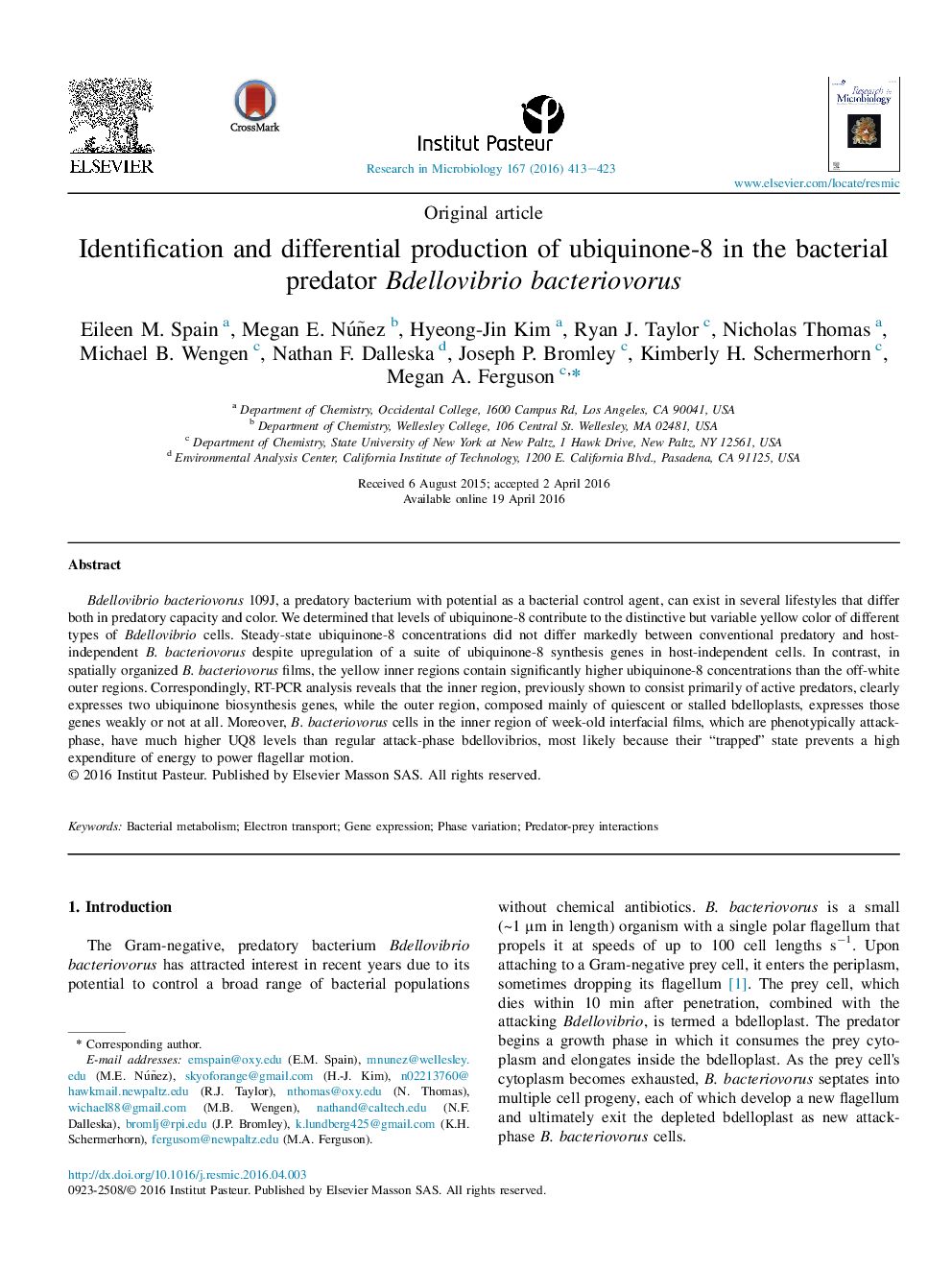| Article ID | Journal | Published Year | Pages | File Type |
|---|---|---|---|---|
| 4358403 | Research in Microbiology | 2016 | 11 Pages |
Bdellovibrio bacteriovorus 109J, a predatory bacterium with potential as a bacterial control agent, can exist in several lifestyles that differ both in predatory capacity and color. We determined that levels of ubiquinone-8 contribute to the distinctive but variable yellow color of different types of Bdellovibrio cells. Steady-state ubiquinone-8 concentrations did not differ markedly between conventional predatory and host-independent B. bacteriovorus despite upregulation of a suite of ubiquinone-8 synthesis genes in host-independent cells. In contrast, in spatially organized B. bacteriovorus films, the yellow inner regions contain significantly higher ubiquinone-8 concentrations than the off-white outer regions. Correspondingly, RT-PCR analysis reveals that the inner region, previously shown to consist primarily of active predators, clearly expresses two ubiquinone biosynthesis genes, while the outer region, composed mainly of quiescent or stalled bdelloplasts, expresses those genes weakly or not at all. Moreover, B. bacteriovorus cells in the inner region of week-old interfacial films, which are phenotypically attack-phase, have much higher UQ8 levels than regular attack-phase bdellovibrios, most likely because their “trapped” state prevents a high expenditure of energy to power flagellar motion.
